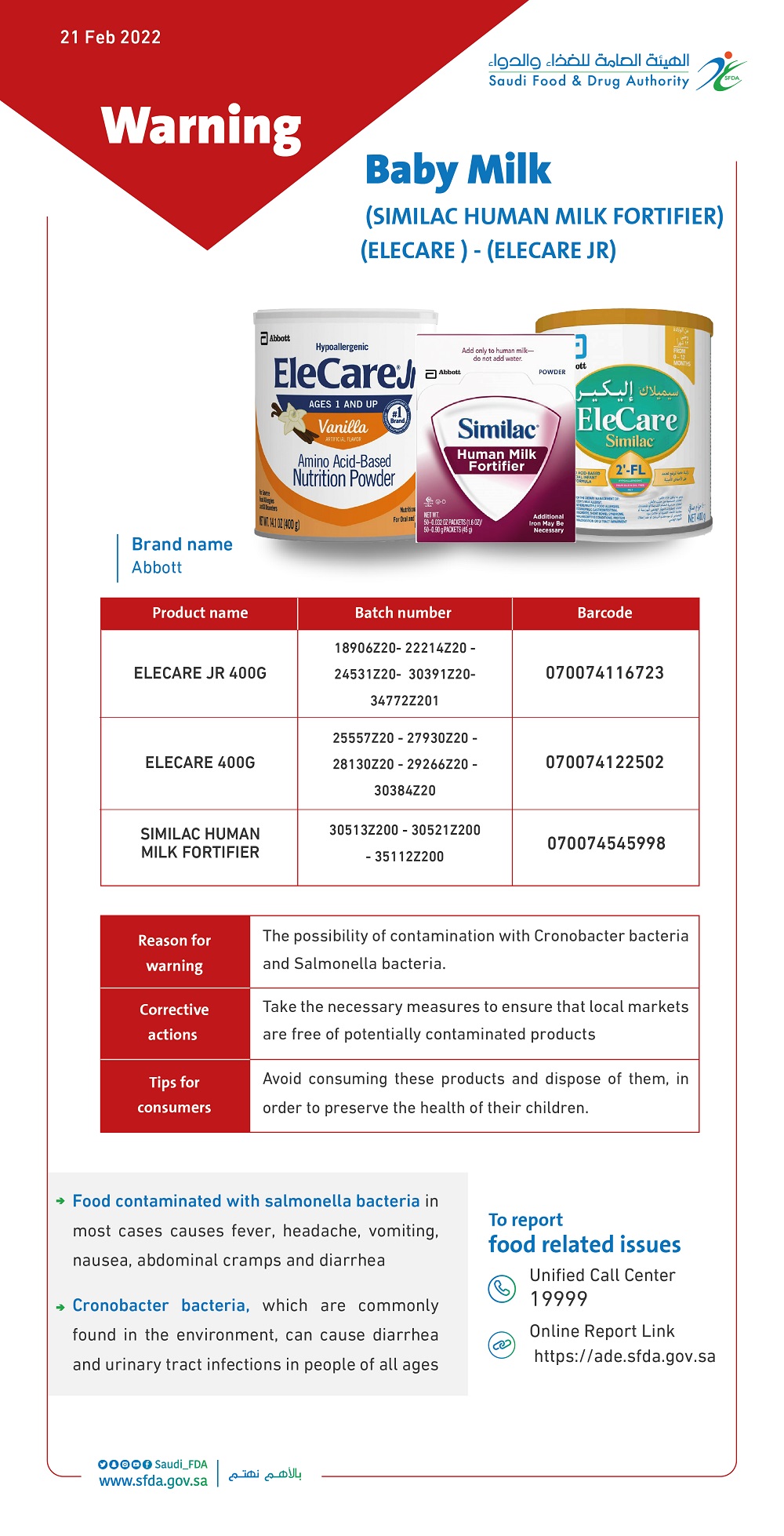SFDA Warns Against 3 Baby Milk Powder Products Due to Possibility of Contamination with Bacteria
2022-02-21
The Saudi Food and Drug Authority (SFDA) has warned against three baby milk powder products produced by one of the facilities of Abbot” company in the United States of America, which are (ELECARE JR), (ELECARE) and (SIMILAC HUMAN MILK FORTIFIER), due to the possibility of contamination with Cronobacter bacteria and Salmonella bacteria.







.png)



